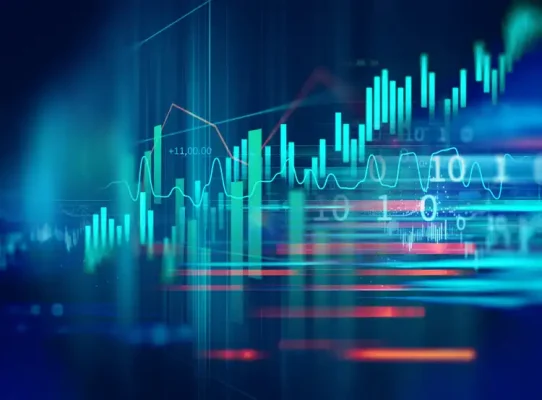How to Trade Indices?
Find out how to spot trading opportunities in the indices markets.
Understanding correlation between indices
Indices are excellent indicators of the current state of the market because they are either sector- or region-based. But given how closely intertwined local economies are today, it is not surprising that indices tend to have high correlations.
For traders who want to take part in the fascinating indices markets, an understanding of the relationship between events in the world economy and the price trends of the major indices is essential. For instance, you might be aware of where the DAX is trading right now and whether it had a bullish or bearish gap when it opened, but what does that mean for you as a trader and how can you take advantage of the opportunities hidden in the data?
How to scan the indices markets
The daily change (in percentage terms) and the number of points that an index has moved up or down since market opening are the two most crucial pieces of information about an index, which are frequently provided along with its current price.
Take the DAX as an illustration. If you believe that Germany’s economy is going in a good direction, you might purchase DAX CFDs in the hope that German companies will drive up the index’s price.
It’s important to keep in mind that sometimes indexes may increase simply due to increased risk appetite to own risky assets, like shares, rather than actual economic growth. These variations, however, are temporary, and a price correction is probably on the horizon. In order to identify and seize opportunities, traders frequently compare the performance of indices from various geographic locations. Let’s examine how that functions in real life by contrasting the DAX and S&P 500.
Are You Ready To Trade Indices Live?
Are you ready to include indices in your trading?
Correlation between DAX & S&P 500
The S&P 500 index is regarded as an important barometer of the US equity market and is used as a gauge of the health of the key industries it includes. The performance of the German stock market is reflected in the DAX on the other side of the Atlantic.
The strong correlation between the two leading indices is depicted in the chart below. When the S&P 500 and the DAX don’t move in sync, this is frequently viewed as a price anomaly and a trading opportunity.
DAX – S&P500 price correlation
Differences between DAX & S&P 500
In order to evaluate how the markets will move in case of a price anomaly it is important to know the unique characteristics of each index and the region and industries it represents.
- Constituent companies
The S&P 500 accounts for about 50% of the US economy, which is largely consumer-driven and heavily reliant on IT, finance, and healthcare. Germany, on the other hand, has a small technology sector and an export-oriented economy. Chemicals are given the most weighting in the DAX situation.
- Total-return vs. price-return index
Total-return indices measure the strength of their constituent companies assuming that all dividends are reinvested. DAX, for example, is a total-return index. Contrary to that, S&P 500 is a price-return index, meaning dividends are not included in the calculation of the return. This is one of the reasons that helps DAX push higher compared to non-total-return indices.
Prior to choosing which side of the market to trade on when index prices diverge, it is crucial to consider the aforementioned factors. CFDs, also referred to as Contracts for Difference, are the most widely used method of trading indices. By taking positions in these financial instruments, either long (buy) or short (sell), depending on whether they believe an index will rise or fall, traders can profit from both rising and falling prices.
Indices trading example
Going long on DAX
Let’s suppose that the DAX is currently trading at 12,427.20. Your research suggests that the market sentiment is positive towards DAX and your technical indicators give you an entry signal. You decide to buy 1 Lot. This position size equals €1 of profit or loss for every point of movement in price.
Two days after, the DAX has indeed pushed higher and it is now trading at 13,120.20. Your profit is calculated by deducting the opening price from the closing price: (13,120.20 – 12,127.20) x €1 = € 993.
Are You Ready To Trade Forex Live?

